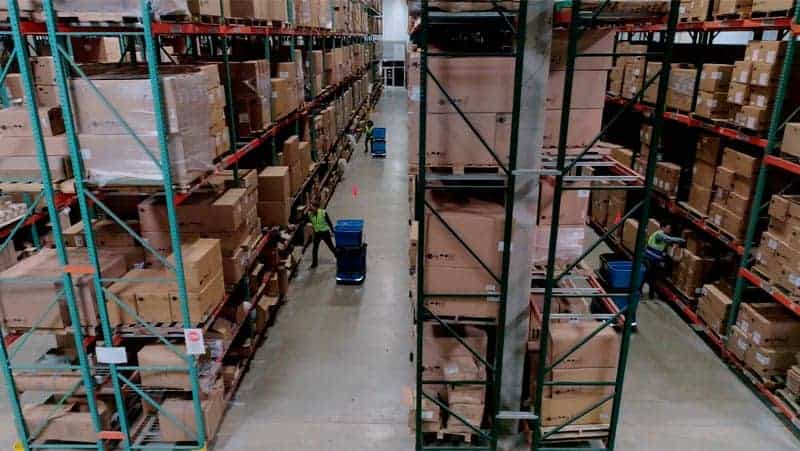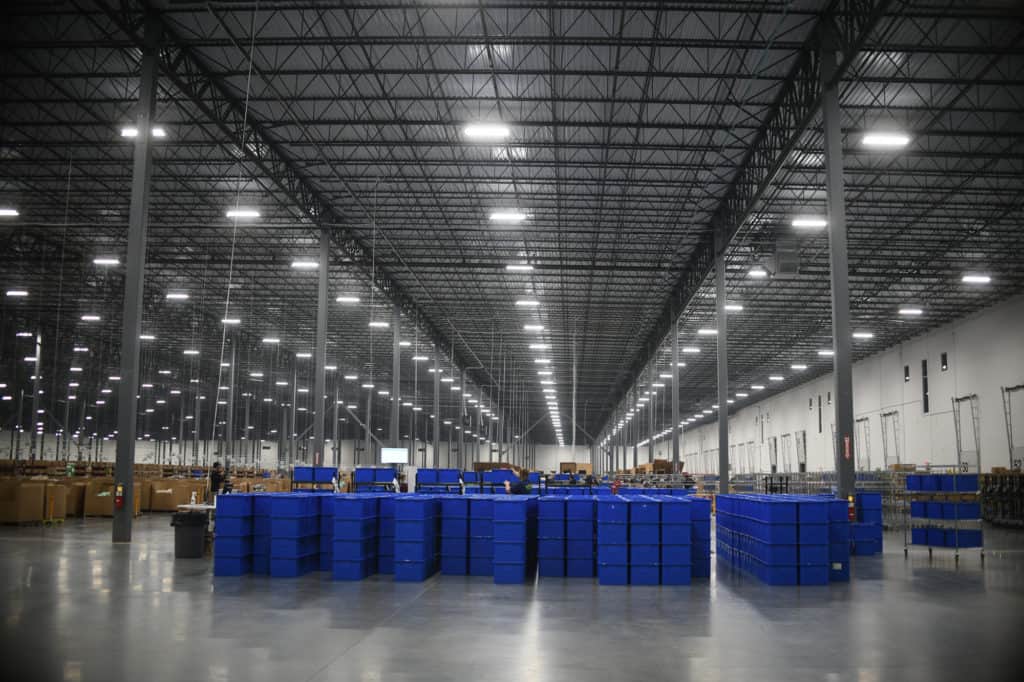There’s an old adage for how to move merchandise: stack it high and watch it fly. The benefits of going vertical have applied in many areas – think about the soaring skylines in Shanghai and Dubai.

Such great heights. The Shanghai Skyline
Warehouses have also adopted this strategy. We face constraints on the ground, but if we can go up…then the sky’s the limit! And this made sense when warehouses were truly pass-through for inventory. It used to be that you would source, manufacture, store, send to a store and then the consumer would access that inventory.
But then the world changed. Everything went digital: the internet brought us ecommerce. Suddenly our supply chains shifted; they were no longer linear, but constantly evolving networks. Now it’s possible to drop ship directly from the factory floor or fulfill an order directly from a warehouse. Inventory now has to be much more nimble and therefore supply chain nodes can no longer resemble their static nature of old.
Before we blindly build upwards, what should we consider?
As a result of digitization, consumers are expecting more from their favorite brands. In response, supply chain professionals have to consider the importance of the velocity of their inventory when designing and operating their supply chain. This is particularly crucial to warehouse operators. So before we blindly build upwards, what should we consider?
What are the true characteristics of my inventory?
There’s no news flash here: not all inventory is created equal. However, we have to be savvy to that fact when we consider the optimal flow of our inventory.
Some questions to ask:
- How does it behave in normal times?
- What about peak season?
- What about unexpected demand spikes?
Supply chains are constantly regulating the flow of inventory, trying to avoid out of stocks, the wrong mix of inventory or poor placement of inventory. Supply chains need to constantly identify and understand their inventory’s characteristics. This will be crucial to how warehouses need to approach the velocity of their goods.
What speed of fulfillment is needed to meet my customers’ needs?
Next day delivery, even two hour delivery sounds lovely. But is it really necessary? For most items, no. So what is the right mix for your product and customers? What is the pace at which your business needs to fulfill your customer’s orders? Companies must determine what reality is and what type of fulfillment is needed. This will have a deep impact on how the various nodes of the supply chain is calibrated.
Do I have access to the right information to best determine how I organize my inventory?
Answering the above questions requires access to relevant and timely data about inventory flows: the true capability of our supply chain nodes. It is important not only to be aware of real-time information, but how historical information can be used as a benchmarking tool. Supply chains need to measure decisions based on baselines.
Bottom line, supply chains have to look at their inventory and understand the speed at which it must move. Understanding this allows for better space utilization within the four walls of warehouses, and to some extent, how we leverage our stores. One size does not fit all. So before we blindly replicate the late 19th century Chicago and New York building booms and focus on the vertical, let’s ensure that we balance vertical with our velocity needs.



